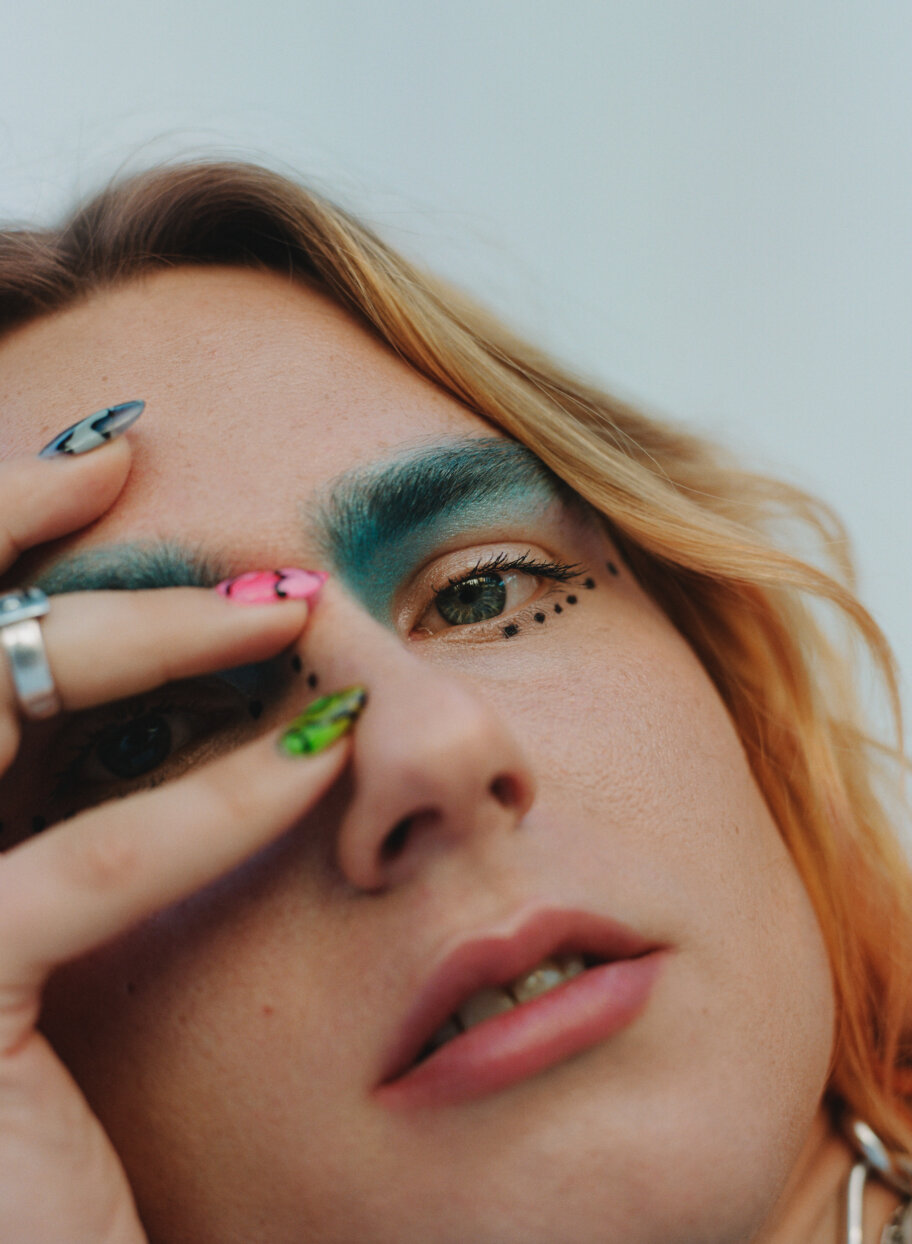
PHOTOGRAPHY WARD & KWESKIN @wardkweskin @supervision_agency
INTERVIEW JESPER GUDBERGSEN @yessirjesper
MAKEUP ZENIA JAEGER @makeupbyzeniajaeger @streetersagency
I was very much a girl right out of the gate. Before I could speak, I reached for the dolls. I loved playing with beautiful hair and I gravitated naturally to all things feminine.
Although my parents were extremely religious – my father was a pastor when I was younger – initially, they were not afraid of allowing me to play with dolls and do the things that were traditionally seen as what the girls do.
As I got older though, they pressured me to grow out of it and I was forced to do a lot of those things in secret. My brothers would tease me and I grew a lot of shame around who I was inside: a sensitive girl into very girly things.
I have vivid memories of telling my sister to keep what we did together a secret: don’t tell anyone I did your hair or picked out your outfit. I was terrified because I was so ashamed. I think because I had to hide what I really wanted to be doing, I probably kept playing with those dolls for much longer than cis girls normally would; I had such a strong urge to touch ‘feminine things’.
In her own way, my mother would support me and say that I should grow up to work in fashion or be a hairstylist, but it was always very clear that I was indeed a boy. An early memory of beauty for me is my sister’s hair. She had long thick strawberry blonde wavy hair. To me that was the epitome of femininity and beauty, and I think that began my lifelong obsession with all things fluid, feminine and flowy.
When speaking about the trans femme and trans woman beauty, there are a few extra steps that I think cis people aren’t necessarily aware of that can actually be implemented into everyone’s own beauty routine. As far as a morning routine, I think one thing most cis people don’t realize is how many trans women and femmes have to prepare for the days when we are going to shave.
I’ve been transitioning and taking hormones for about a year and a half now. I transitioned socially a year or two prior to beginning Hormone Replacement Therapy (HRT) and I think that in itself alleviated a lot of the dysphoria that I had surrounding my body. For me, the dysphoria especially centered around my facial hair – I’ve been cursed with having lots of it.
Since my skin is so sensitive I try not to shave every day, so the first thing for me in a ‘routine’ is to block out the days when I am going to shave. It’s a way to protect my skin, but it’s also very hard because it’s extremely dysphoric. Allowing my facial hair to grow out is not easy for me, but I found it’s the best way until I can get electrolysis for my facial hair.
Covid has had a very small benefit because we all wear masks. If I need to, I can go out without having to worry too much about facial hair. But, when I do shave, razor burns are a major thing for me. They’re all over my body really, which is a struggle. Recently what has changed my life is to shave with oil alongside a shaving cream. Using steam and really hot water helps to open up my pores and lathering oil before using shaving cream has really been a game-changer.
I believe the oil coats the follicles and creates a protective barrier for my skin and it’s been helping a lot with razor bumps. I use a mix of natural oils and I would say rosehip oil or squalane would be really good options for those looking to try this.
For my whole life, I’ve had severely oily skin and I think that’s actually what drew me to makeup in the first place; I would sneak into my mom’s makeup bag and put on her powder foundation which was my first true makeup obsession. I wore that everywhere because I felt that mellowed out my oiliness, one of my biggest insecurities.
After being on HRT for 18 months, I’ve noticed that my skin has become a lot drier with the increase of estrogen, but who knows where it’ll end up. The myth is true, beginning HRT is very similar to going through puberty. My body started changing so rapidly and my skin along with it, so I felt very much like a hormonal teenage girl. Because I also started this process during the beginning of the pandemic, it really did feel like the world was about to end every single day. The first few months were extremely turbulent for me, but after that, I began to see the light at the end of the tunnel
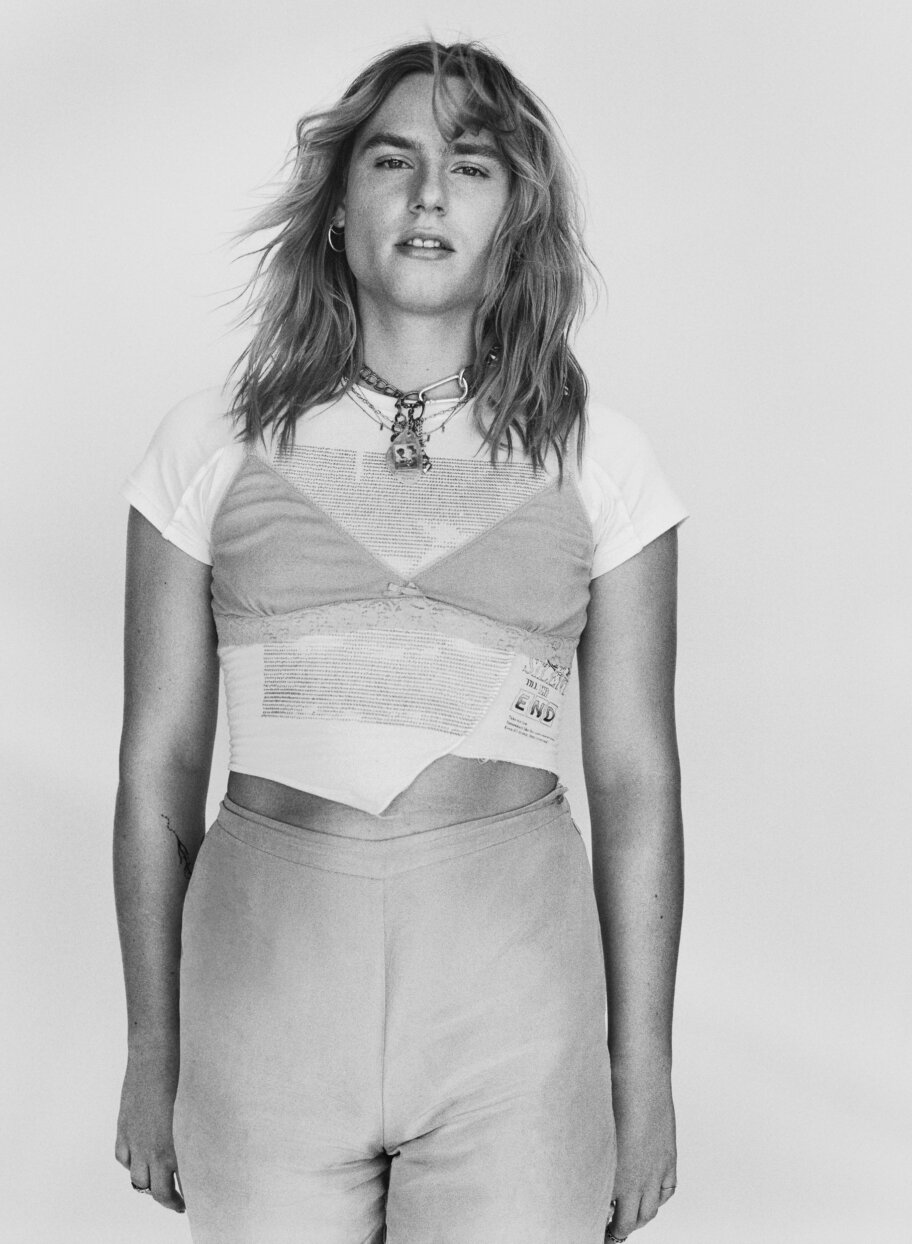
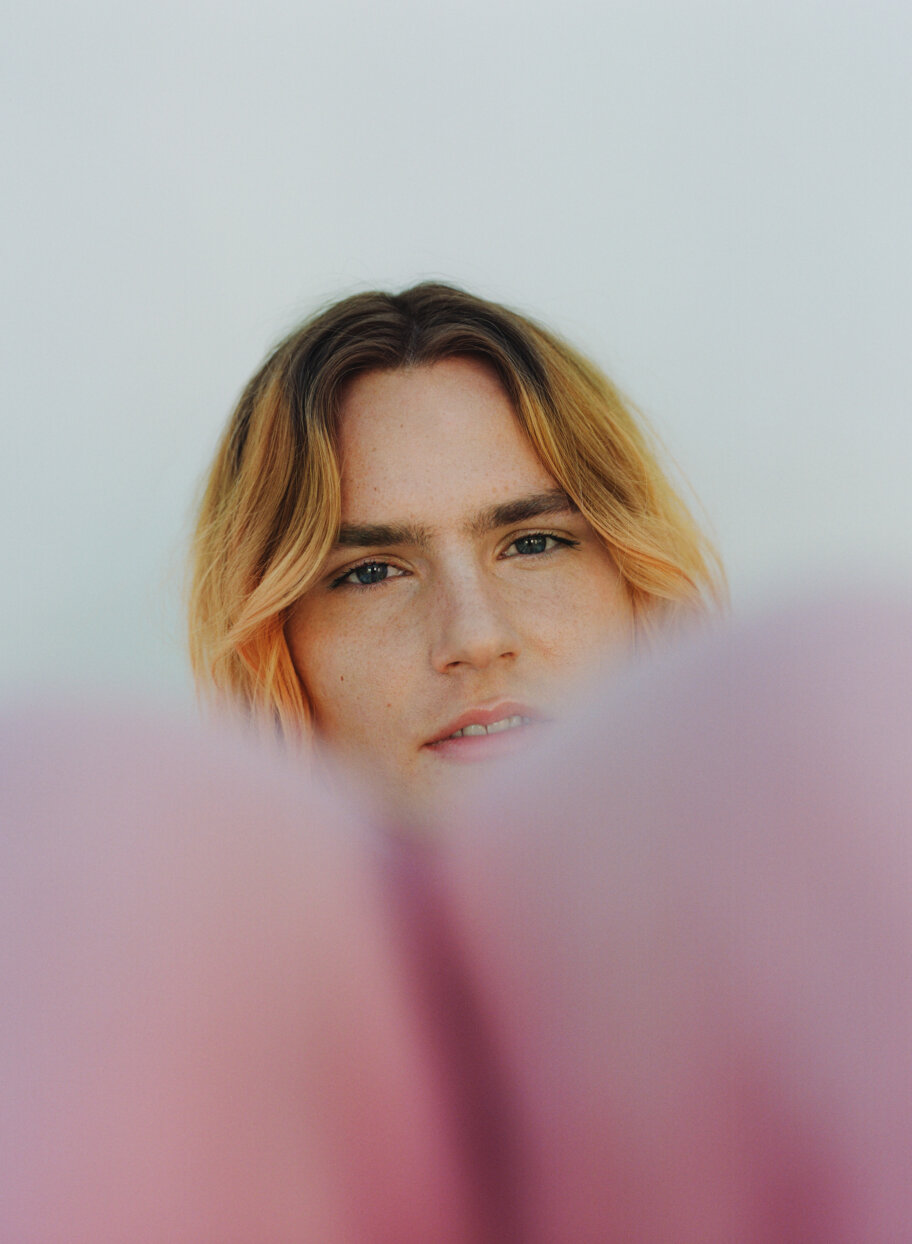
My hair has also been on quite the journey. I started growing it out in my early twenties, a point where I was essentially trying to transition but wasn’t quite ready to do so yet, so it was more of an exploration of androgyny at that point. Growing my hair was something that allowed me to play with the idea of femininity.
As I began taking hormones, I mistakenly made the choice to bleach it all. Not only did I bleach it once, but I also let my roommate bleach it 3 times within a week. I say mistakenly because I fried my hair completely and I feel like I got jipped out of seeing the full extent of the changes in my hair in the first few months of taking hormones.
It was breaking, got thinner, and I felt like I should have just waited with that because I had heard that a lot of trans women have such an amazing experience seeing their hair growing thicker. I guess the fact that my hair still looks good and healthy is a testament to what the hormones can do – my hair didn’t all fall out after the torture I submitted it to.
I grew up putting my t-shirt over my head to simulate having long hair, fantasizing about long luscious locks for hours in the mirror. For me, long hair was always something I really wanted and saw as feminine. I watch amazing trans women that I look up to, like the actress Indya Moore, buzzing off all their hair and I think it’s so beautiful.
To reach a state in your own womanhood, in your own femininity to step outside of the security of having long hair. Someone who is feminine doesn’t have to look any single way. It’s interesting to me to think about this, I feel like I have been transitioning for so much longer. Saying out loud that it’s only been eighteen months feels shocking because it feels like this has always been me.
Presenting as a boy almost doesn’t even register with me as something that happened, when was that? But I feel this immense pressure to be constantly performing femininity at 100%.
That is for so many reasons of course; passing is not only a huge thing for my mental state but for so many other trans women as well. And it’s about safety: going out in the world in a dress and with long hair makes me feel like I will be taken more seriously as a feminine person.
I’ve always felt powerful presenting as an androgynous person, but it comes down to a lot of societal pressure. I feel the pressure to have long hair, do a full face of makeup before going out in the world, to do what is deemed feminine. The idea of shaving my head terrifies me. I cannot think of anything scarier than not being able to “hide” behind my hair or use my hair as that weapon and defense.
Once I reach a state in my transition where I feel more comfortable with how I am presenting, I could see myself cutting all my hair off. For me personally, I think facial feminization surgery is where I’m headed to feel more comfortable and that will be a huge step on the way to feeling more secure in my femininity.
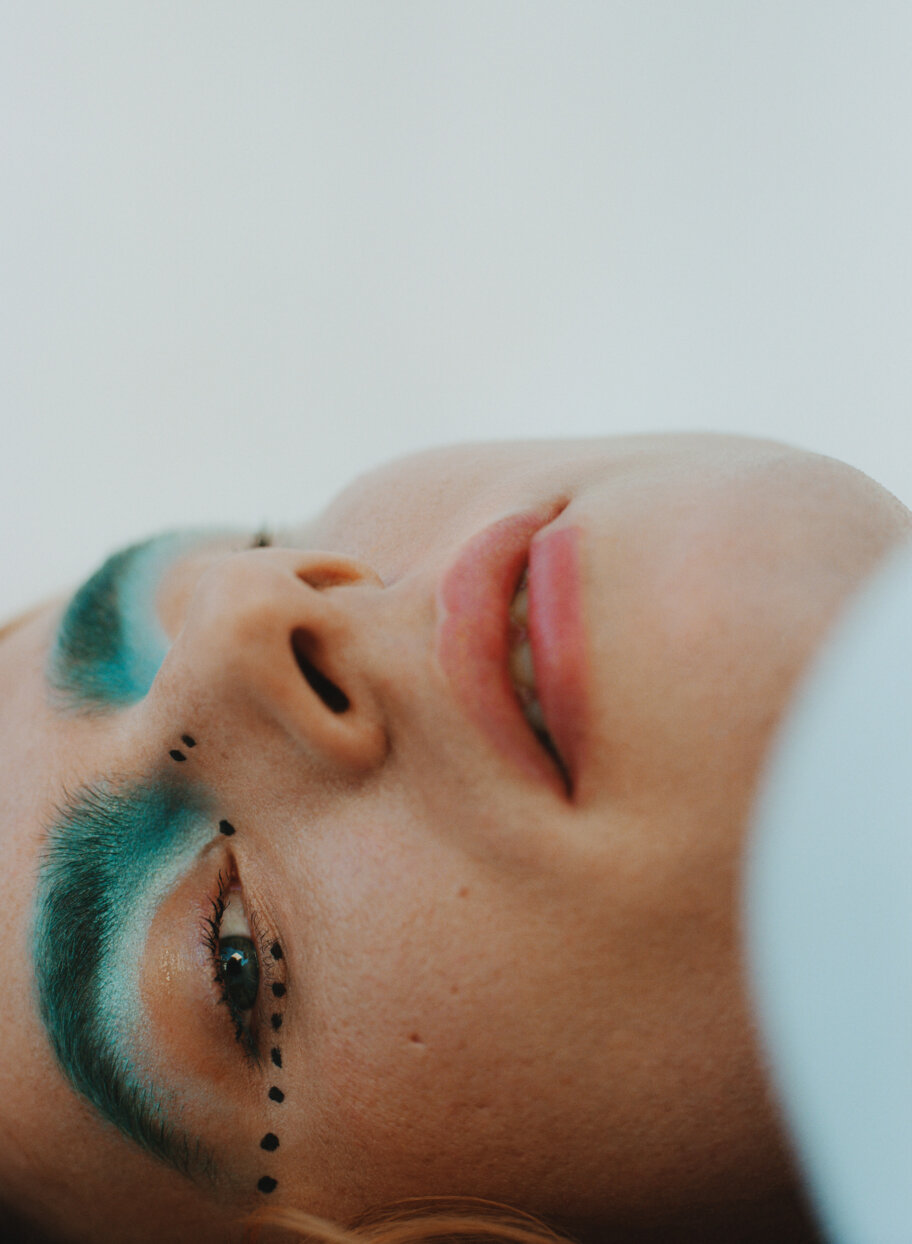
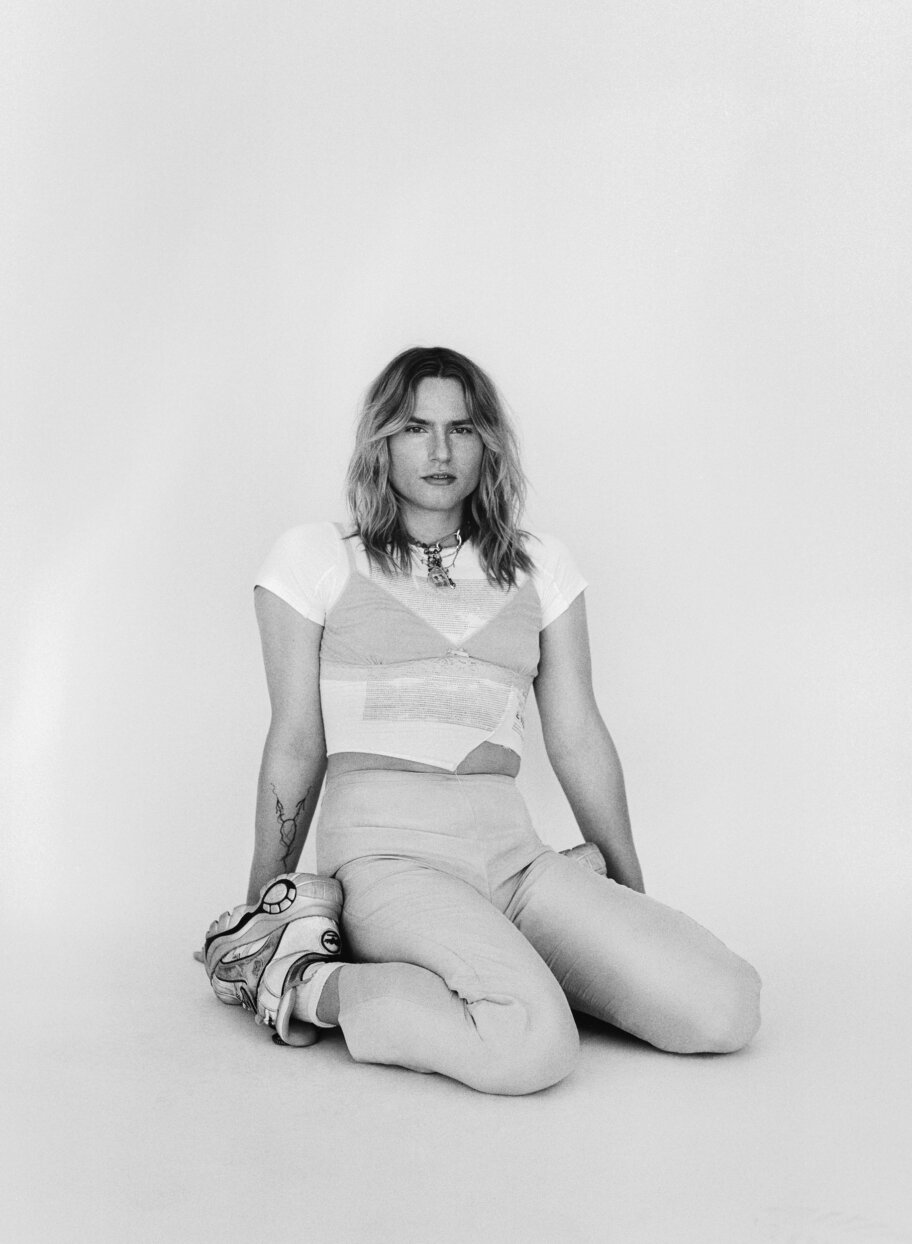
A lot of cis women take advice from trans women about how to feminize their faces and I think that’s an interesting space to explore. My three best friends are all cis-women and they look to me as a kind of makeup “chosen one”, although I don’t quite feel like I am. Almost everything I know about makeup is from Youtube tutorials, I can’t take any personal credit for being a makeup wiz who figured it all out!
Most of us trans women didn’t grow up being allowed to practice with makeup and we couldn’t go through a trial and error period until we transitioned, so I had to learn fast. I almost felt like I had to compensate for all the time I had missed. So, I went in with guns blazing. I try anything and everything. I’ve always been an artist and love to draw, so oftentimes I’ve taken that approach with my personal makeup too.
I doodle and experiment and usually, the result is kind of interesting. I guess my approach has made it look like I really know what I’m doing because I’m not afraid to try unusual things. I don’t necessarily follow the rules of what you’re supposed to with a certain type of eye shape etc.
One element of makeup I feel I have gotten quite good at – and have been able to teach my cis friends – is color correcting. Areas of my face tend to be darker because of the hair I have growing in there, so color correcting was naturally a very important skill for me to learn. Over time I have learned how important it is to set it with powder, before applying foundation, so that it doesn’t all blend into a big orangey mess – something I learned the hard way…
Concealer is another big one for a lot of trans women and is something a lot of us have become masters at. Where you apply the concealer can mean a great deal to help feminize the face. Again, through trial and error, I learned that it does not work for my face to just cover up my under-eye area with concealer – it just makes me look older. Instead, I apply a little bit in the corner of my eyes and it opens my eyes up and makes me look youthful.
It’s something I’ve been sharing with everyone like it’s thee good word! Concealer is quite amazing, a little on your cheekbones, under your nose… Watching drag queens do their heightened makeup routine can be really useful to look at for a trans woman as well, on a less “severe” scale.
Getting back to my routine, I steam my face in the areas where I need to shave and afterward use a fairly harsh after shave which really helps me with razor burn. Cortisone cream has also helped a lot with itching and irritation. I then move on to a serum and vitamin C oil, a moisturizer, and of course sunscreen, before doing my concealer and my makeup routine. I powder my whole face which I guess isn’t that common anymore but is a ritual from being a young kid and diving into my mom’s makeup. It feels like a necessary step for me.
Going out with a full face of makeup is definitely still a thing for me. It depends on my mental state that day of course, but a lot of times, putting on makeup is something that can get me out of a rut. It helps me feel prettier and gives me a reason to go outside. If I go through all that, I want to show off what I’ve done!
There are definitely times where I embrace going for a more natural look. I’ve noticed that’s something that is true for all the women in my family: we look a lot better with less makeup. So keeping that in mind it is still different for me because I have to compensate a bit, I try to go less heavy with the makeup.
Presenting visibly trans most of the time, I get very mixed emotions. I get “clocked” by strangers on the street, but minutes later will have a conversation with someone socially, who tells me they had no idea I am trans. I’m constantly trying to see if people are staring at me because they think I’m attractive or if they’re trying to decipher my gender. “Do I pass – does everyone know?” It’s just extremely exhausting.
People’s first impressions of me can be one of the hardest things because I sometimes forget about my own identity when walking into a room. But, I feel there is a power in just being who I am. I will often be the only trans-presenting person somewhere and I am learning to focus on owning that. There is something beautiful about taking that space and being visible for the sake of being visible. The highest example of natural beauty to me is being honest and owning who you are.
| Cookie | Duration | Description |
|---|---|---|
| cookielawinfo-checkbox-analytics | 11 months | This cookie is set by GDPR Cookie Consent plugin. The cookie is used to store the user consent for the cookies in the category "Analytics". |
| cookielawinfo-checkbox-functional | 11 months | The cookie is set by GDPR cookie consent to record the user consent for the cookies in the category "Functional". |
| cookielawinfo-checkbox-necessary | 11 months | This cookie is set by GDPR Cookie Consent plugin. The cookies is used to store the user consent for the cookies in the category "Necessary". |
| cookielawinfo-checkbox-others | 11 months | This cookie is set by GDPR Cookie Consent plugin. The cookie is used to store the user consent for the cookies in the category "Other. |
| cookielawinfo-checkbox-performance | 11 months | This cookie is set by GDPR Cookie Consent plugin. The cookie is used to store the user consent for the cookies in the category "Performance". |
| viewed_cookie_policy | 11 months | The cookie is set by the GDPR Cookie Consent plugin and is used to store whether or not user has consented to the use of cookies. It does not store any personal data. |